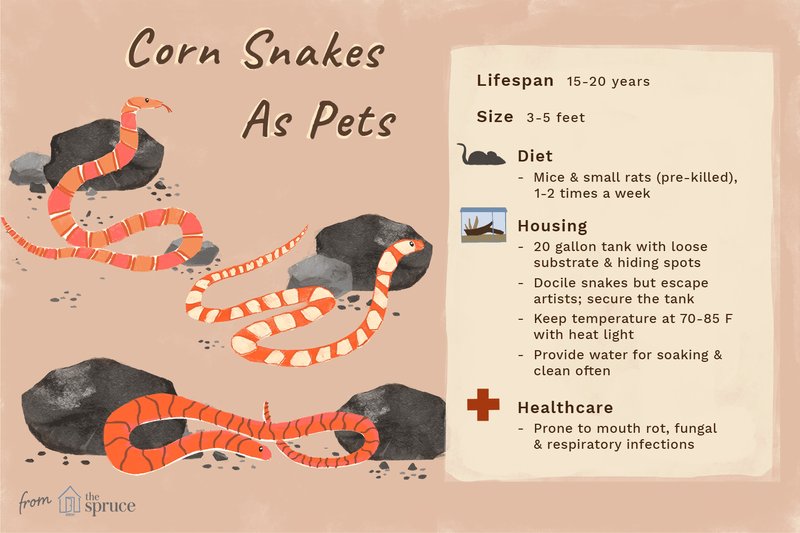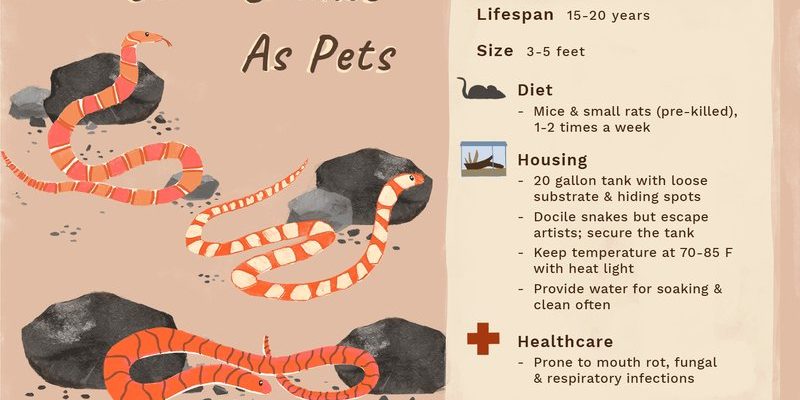
Corn snakes are generally hardy creatures, but they’re not immune to the occasional hiccup. Taking care of their health is a bit like tending to a garden; you need to know what to look for and how to prevent weeds from creeping in. By being aware of common health issues and how to prevent them, you can ensure that your corn snake thrives in its environment.
Let’s dive into some of the most common health issues corn snakes face and how you can keep your scaly friend happy and healthy.
Respiratory Infections: The Silent Struggler
Respiratory infections are one of the most common health issues in corn snakes. These infections can be caused by poor humidity levels, stress, or even an unclean environment. Just like us, snakes can catch a cold, and if you notice your corn snake wheezing or having trouble breathing, that’s a red flag.
The signs of a respiratory infection can be subtle at first. You might see your snake making strange popping sounds or notice clear discharge from its nostrils. In more severe cases, they may exhibit lethargy or unwillingness to eat.
Prevention is key. Maintaining proper humidity levels (around 40-60%) and keeping their enclosure clean can go a long way. If you ever notice these symptoms, don’t hesitate to take your corn snake to a vet who specializes in reptiles.
Mites: The Unwanted Guests
Mites can be a real nuisance for corn snakes. These tiny parasites love to hitch a ride on reptiles and can cause itching, irritation, and even anemia if left untreated. It’s like having a bad case of the hiccups; it just doesn’t go away without some intervention.
You can spot mites by looking for tiny, moving dots on your snake’s body or in its habitat. These little bugs thrive in warm, humid environments, making a cozy home in your pet’s enclosure.
To prevent mites, always quarantine any new reptiles before introducing them to your established pets. Regularly cleaning and disinfecting the habitat will help, too. If you do find mites, treatments are available, but a vet visit is often your best bet for effective solutions.
Shedding Issues: When the Skin Doesn’t Fit
Shedding, or ecdysis, is a natural part of a corn snake’s life. However, sometimes things can go wrong. If your snake is struggling to shed, it can lead to issues like retained skin, especially around the eyes and tail. Imagine trying to pull a sweater off that just won’t budge; that’s how uncomfortable it can be for them.
Signs of shedding issues can include incomplete sheds, cloudy eyes, or changes in behavior. This can be a sign that the humidity level in their habitat is too low, which can dry out their skin and make shedding difficult.
To help your snake, maintain a humid hide in its enclosure during shedding periods, and you might even consider giving it a warm soak. Keeping an eye on humidity levels (around 50-70%) is crucial for preventing shedding problems.
Obesity: The Overindulgence Issue
Corn snakes can get a bit chubby if they’re overfed. Just like us, snakes need a balanced diet, and too much food can lead to obesity, which can cause a host of health issues down the line. It’s kind of like eating too many snacks; it feels good at the moment but can lead to regret later!
The signs of obesity in corn snakes include a rounded body shape and a lack of muscle tone. If your snake can hardly move, it’s time to reevaluate its feeding schedule.
To prevent obesity, stick to a proper feeding schedule based on your snake’s age and size. Typically, adult corn snakes should eat every 7-14 days, while juveniles need to eat more frequently. Always opt for the right-sized prey to keep them healthy and active!
Vitamin Deficiencies: A Balanced Meal Matters
Just like we need vitamins to stay healthy, corn snakes require a balanced diet, too. A lack of essential vitamins and minerals, particularly calcium and vitamin D3, can lead to serious health problems like metabolic bone disease. It’s like trying to run a race without proper fuel; it just won’t work!
Signs of vitamin deficiencies include lethargy, weakness, or deformities in the bones. To keep your corn snake healthy, ensure its diet includes appropriately sized frozen-thawed rodents and the occasional supplement if recommended by a vet.
Incorporating a variety of food sources can help meet their nutritional needs. The right diet will keep your pet vibrant and ready to explore its surroundings!
Handling Stress: Keeping Calm Under Pressure
Stress is another factor that can affect the health of your corn snake. Just like you might feel anxious during a big presentation, snakes can feel stressed from improper handling, loud noises, or an overcrowded habitat. It’s important to create a calming environment for them to thrive.
Signs of stress can include hissing, biting, or trying to escape. If your snake is acting out, it might be trying to tell you it’s feeling overwhelmed.
To help alleviate stress, ensure that their enclosure is the right size, with plenty of hiding spots and a comfortable temperature gradient. Remember to handle them gently and limit interactions when they seem uncomfortable. A little patience and understanding go a long way!
Taking care of your corn snake isn’t just about feeding them; it’s about creating a nurturing environment that promotes their overall health. By understanding the common health issues they face and how to prevent them, you’re setting your scaly friend up for a long, happy life.
Whether it’s watching for the signs of respiratory infections or ensuring their diet is balanced, your attention to these details makes all the difference. You’re not just a pet owner; you’re a caretaker, and that relationship is pretty special. With a little love and care, your corn snake can thrive and become a beloved part of your family!

